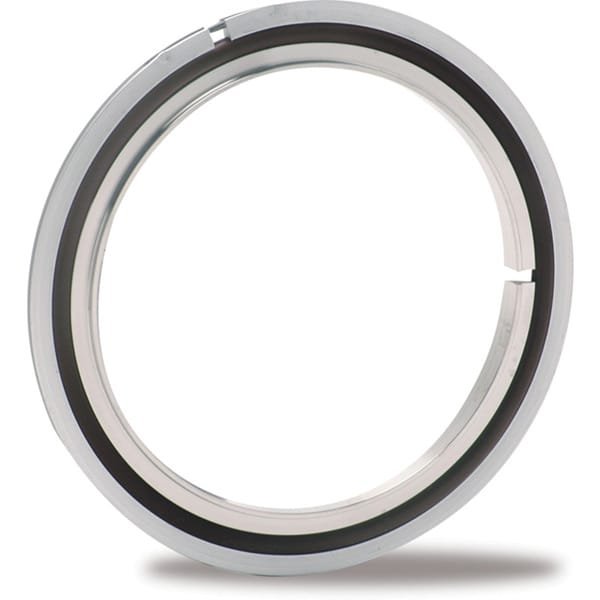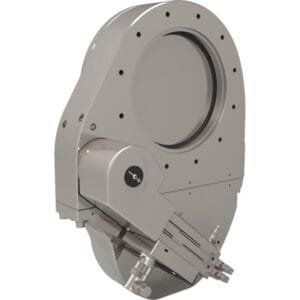ISO HV Centering Rings (SS/Al): Dual-Material Vacuum Sealing for ISO-K and ISO-F Flanges
ISO HV Centering Rings (SS/Al) are robust, high-vacuum sealing components engineered for joining ISO-K and ISO-F flanges in demanding vacuum system environments. Each ring includes a precision-machined stainless steel inner ring for structural integrity, an aluminum outer ring for weight reduction, and a high-performance elastomeric o-ring to ensure leak-tight operation under HV conditions.
These centering rings are designed for use with ISO (Large ISO) flange standards, which are commonly found in chamber ports, forelines, and modular vacuum assemblies across both research and industrial systems. Whether clamped with ISO-K fittings or bolted with ISO-F flanges, these rings deliver long-term sealing reliability and mechanical alignment support.
Key Features of ISO HV Centering Rings (SS/Al):
ISO Flange Compatibility
Fully compatible with both ISO-K (clamp-fastened) and ISO-F (bolt-fastened) flange styles.Dual-Material Design
Inner Ring (Stainless Steel): Provides mechanical strength, corrosion resistance, and dimensional stability under vacuum compression.
Outer Ring (Aluminum): Lightweight and thermally conductive, reducing flange strain and overall system weight.
Integrated O-Ring Sealing
Each centering ring includes a vacuum-grade FKM (Viton®) or Buna-N o-ring for general high-vacuum use. Neoprene o-rings are available as optional alternatives depending on temperature or chemical compatibility requirements.High Vacuum Performance
Capable of maintaining vacuum integrity down to 10⁻⁸ Torr, with temperature limits determined by the o-ring compound (typically 0 °C to 120–200 °C).Precision Alignment and Reusability
The stainless steel inner ring maintains concentric flange alignment, while the aluminum outer ring allows for reusable and fast assembly using standard ISO clamps or bolts.
TFM offers ISO HV Centering Rings (SS/Al) in standard ISO sizes including ISO63, ISO100, ISO160, ISO200, ISO250, ISO320, and larger upon request. Each ring is vacuum-cleaned and inspected for dimensional accuracy to ensure compatibility across a wide range of vacuum equipment.
Applications Include:
High-vacuum processing chambers
Semiconductor fabrication equipment
Analytical and metrology tools
Thin-film deposition systems
Cleanroom-integrated vacuum subsystems
In addition to SS/Al configurations, TFM also provides full aluminum or all stainless steel centering rings, as well as screened centering rings for pump inlet debris protection.
In summary, ISO HV Centering Rings (SS/Al) offer the ideal balance between strength and weight for sealing ISO-K and ISO-F flanges in high-vacuum systems. Their dual-material construction, elastomer flexibility, and ISO compliance make them a reliable and adaptable solution for critical vacuum sealing tasks.
Ordering Table
| Flange OD | Reference | O-Ring Material | Part Number |
| ISO63 | SS / Aluminum Centering Ring | Fluorocarbon | QF63-SAVR |
| ISO80 | SS / Aluminum Centering Ring | Fluorocarbon | QF80-SAVR |
| ISO100 | SS / Aluminum Centering Ring | Fluorocarbon | QF100-SAVR |
| ISO160 | SS / Aluminum Centering Ring | Fluorocarbon | QF160-SAVR |
| ISO200 | SS / Aluminum Centering Ring | Fluorocarbon | QF200-SAVR |
| ISO250 | SS / Aluminum Centering Ring | Fluorocarbon | QF250-SAVR |
| ISO320 | SS / Aluminum Centering Ring | Fluorocarbon | QF320-SAVR |
| ISO400 | SS / Aluminum Centering Ring | Fluorocarbon | QF400-SAVR |
| ISO500 | SS / Aluminum Centering Ring | Fluorocarbon | QF500-SAVR |
| ISO630 | SS / Aluminum Centering Ring | Fluorocarbon | QF630-SAVR |
| ISO63 | SS / Aluminum Centering Ring | Buna-N | QF63-SABR |
| ISO80 | SS / Aluminum Centering Ring | Buna-N | QF80-SABR |
| ISO100 | SS / Aluminum Centering Ring | Buna-N | QF100-SABR |
| ISO160 | SS / Aluminum Centering Ring | Buna-N | QF160-SABR |
| ISO200 | SS / Aluminum Centering Ring | Buna-N | QF200-SABR |
| ISO250 | SS / Aluminum Centering Ring | Buna-N | QF250-SABR |
| ISO320 | SS / Aluminum Centering Ring | Buna-N | QF320-SABR |
| ISO400 | SS / Aluminum Centering Ring | Buna-N | QF400-SABR |
| ISO500 | SS / Aluminum Centering Ring | Buna-N | QF500-SABR |
| ISO630 | SS / Aluminum Centering Ring | Buna-N | QF630-SABR |





Reviews
There are no reviews yet.